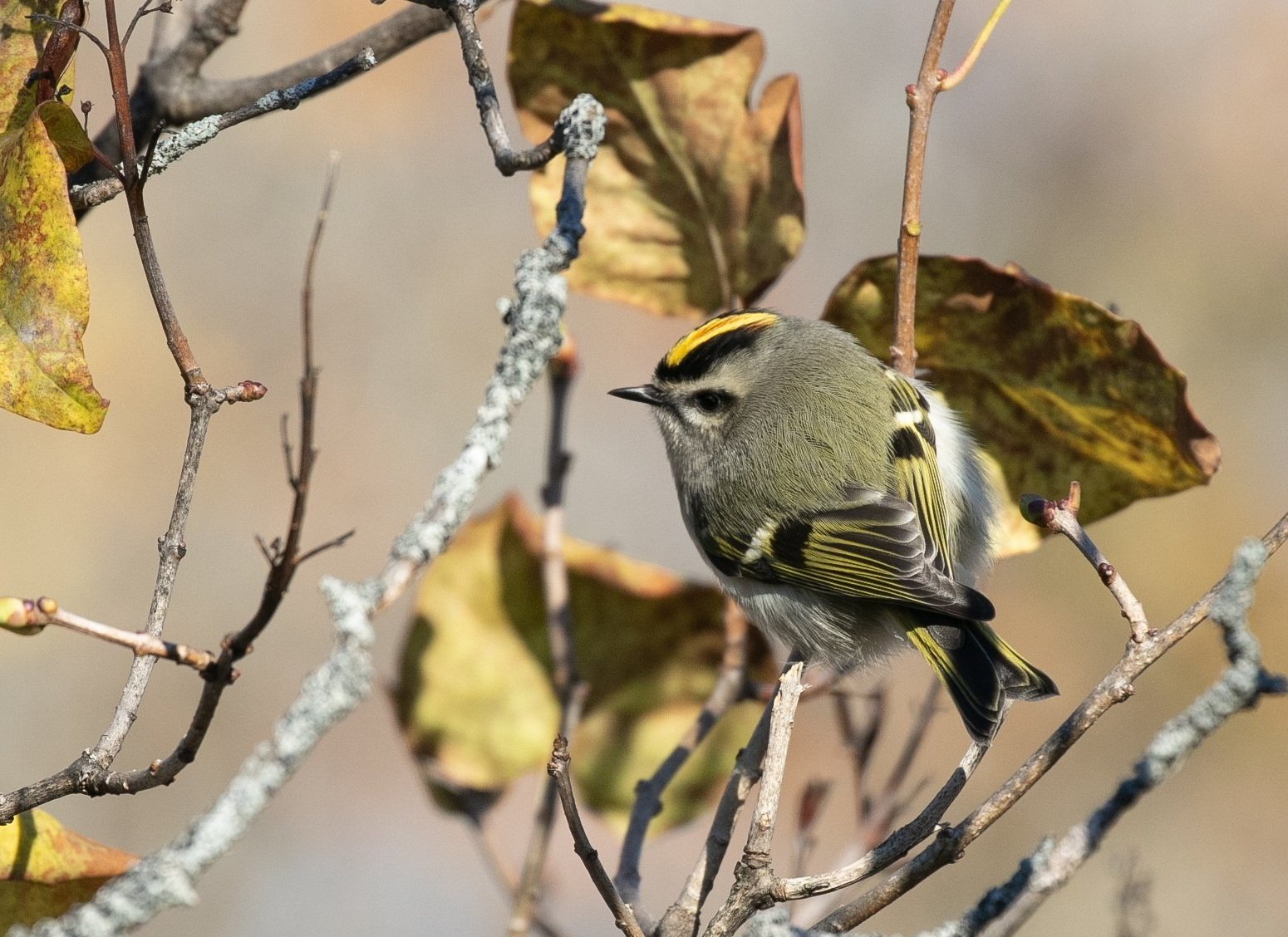
Publications
Golden-crowned Kinglet by Ashley Jensen
For the past 30 years, PEPtBO has collaborated with other conservation organizations and contributed banding data to major research projects, many of which have had a profound impact on our understanding of bird populations.
These projects are shared through reports, scientific and magazine articles.
PEPtBO’s Annual Reports:
PEPtBO publishes an annual banding report; detailing banding activities, recaptures, special research programs, and other observations.
Black-throated Green Warbler
Other Reports:
These are reports that use data from CMMN stations, such as PEPtBO, as well as reports that acknowledge PEPtBO’s contribution.
Birds Canada and Environment and Climate Change Canada. (2024). The State of Canada’s Birds Report. Accessed from NatureCounts.
Wilson, W. G., E. D. Cheskey. (2001). Prince Edward County South Shore Important Bird Area Conservation Plan. Canadian Nature Federation, Bird Studies Canada, Federation of Ontario Naturalists. 41p
The Canadian Migration Monitoring Network releases reports on bird populations in Canada, which include PEPtBO’s Daily Estimated Totals since 1998.
Dunn, E., R. Boardman, P. Campsall, D. Collister, B. Drolet, P-A. Dumas, D. Either, M. Gahbauer, S. Mackenzie, P. Sinclair, C. Smith (2021). The Canadian Migration Monitoring Network - Réseau canadien de surveillance des migration: Researching Canada’s Landbirds for Twenty Years. Vingt ans de recherche sur les oiseaux terrestres au Canada. CMMN-RCSM Scientific Technical Report #3. Birds Canada, Port Rowan, Ontario. 29p
Crewe, T.L., J.D. McCracken, P.D Taylor, D. Lepage, A.E. Heagy. (2008). The Canadian Migration Monitoring Network - Réseau canadien de surveillance des migrations: Ten-Year Report on Monitoring Landbird Population Change. CMMN-RCSM Scientific Technical Report #1. Birds Canada, Port Rowan, Ontario, 69p.
Red-eyed Vireo
*Daze, J., N. Bartok, E. Nol.
Effects of drought and growing degree days on age ratios of migrating Bobolink (Dolichonyx oryzivorus) through southeastern Ontario, Canada.
In Scientific Review
Lehikoinen A., A. Lindén, M. Karlsson, A. Andersson, T.L. Crewe, E.H. Dunn, G. Gregory, L. Karlsson, V. Kristiansen, S. Mackenzie, S. Newman. (2019).
Ecological Indicators, 101, 985-91.
Hobson, K. A., S. L. Van Wilgenburg, E. H. Dunn, D. J. T. Hussell, P. D. Taylor, and D. M. Collister. (2015).
Avian Conservation and Ecology. 10(1): 3.
N.H. Ogden, I.K. Barker, C.M. Francis, A. Heagy, L.R. Lindsay, K.A. Hobson. (2015).
Ticks and Tick-borne Diseases. 6(6), 715-720.
Confer, J.L., L.L. Kanda, L. Ireyena. (2014).
The Wilson Journal of Ornithology. 126(2), 305–320.
Beckett, S.R., G.A. Proudfoot. (2012).
Sex-Specific Migration Trends of Northern Saw-Whet Owls in Eastern North America.
Journal of Raptor Research, 46(1), 98-108.
Ogden, N. H., Lindsay, L. R., Hanincová, K., Barker, I. K., Bigras-Poulin, M., Charron, D. F., Heagy, A., et al. (2008).
Role of Migratory Birds in Introduction and Range Expansion of Ixodes scapularis Ticks and of Borrelia burgdorferi and Anaplasma phagocytophilum in Canada.
Applied and Environmental Microbiology, 74(6), 1780–1790.
Morshed, M. G., Scott, J. D., Fernando, K., Beati, L., Mazerolle, D. F., Geddes, G., Durden, L. A. (2005).
Journal of Parasitology, 91(4), 780-790.
Dunn, E. (2002).
A cross-Canada comparison of mass change in birds during migration stopover.
The Wilson Bulletin, 114(3), 368-379.
Scientific Articles and Notes
These are scientific articles and other notes that share knowledge directly resulting from research programs at PEPtBO. Scientific articles are peer-reviewed.
*Works authored by PEPtBO staff.


